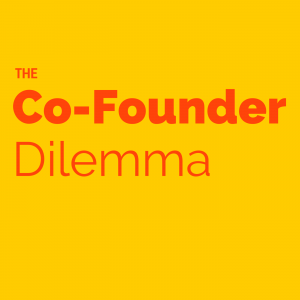The first few customers (or users) usually set the tone for your startup. They are the ones with either acute pain or the burning problem, and the earliest of early adopters. Usually, I have found that most entrepreneurs get their early customers because of the relationship they have with them OR they solve a really pressing problem for their customers.
When I talk to most entrepreneurs, one of the first things I recommend to them is to segment their potential customers.
The discipline of finding the factors that differentiate one set of your potential customers from another based on a set of characteristics is customer segmentation.
There are 3 important questions you will need to answer about your customer segmentation strategy before you recruit potential customers.
Most entrepreneurs, at the napkinStage end up getting customers who they know, but sometimes may not have the pain point as much. Else they end up getting customers who have the pain or are unwilling to try anything “not proven”.
When you have been out trying to get early paying customers, you will realize quickly that customers have one of several reasons for not buying or wanting to try your solution.
1. They are risk averse, and not early adopters, so while they have the pain, they use their existing manual or alternative techniques to solve the problem.
2. They are able to deal with the pain, since they get a sense of job security knowing that they know how to solve the problem, and no product, machine or algorithm can replace them.
3. They believe the ROI from solving the pain will be negligible and their time and money is better spent elsewhere.
4. They want more mature solutions so they can handle their “special situation”, which is unique enough that no early product can customize it and be less expensive at the same time.
5. They believe the solution will weaken their position since it will solve the problem that exposes their “value-add” to the company.
6. They are not emotionally vested in either you or your startup, so they are not willing to take the leap of faith to try an early version of the product.
7. They actually dont believe your solution will solve the problem and are willing to wait and see some more proof until a point that it does.
These and many other excuses / reasons are the ones I have heard of consistently when I have been trying to get early customers for most of my startups.
If your potential customers sees a big benefit to:
a) their personal agenda (promotion, makes them look good, etc)
b) their position in the company and finally
c) their company’s standing in the market.
Picking your early customers though, is almost always a combination of personal relationships, built over time and solving a problem they have that is so intense that they are willing to try anything to get rid of it.


 Of the 13 weeks, his development team spent 2 weeks just implementing a sign up process, a user cancellation process, a payment process, a refund process, a login process, a password retrieval process, etc. Which he did not realize was the
Of the 13 weeks, his development team spent 2 weeks just implementing a sign up process, a user cancellation process, a payment process, a refund process, a login process, a password retrieval process, etc. Which he did not realize was the  This step is to ensure that you can know exactly what are the top 3 features you need to implement first which will make your product “must have” to solve the problem for your users.
This step is to ensure that you can know exactly what are the top 3 features you need to implement first which will make your product “must have” to solve the problem for your users. Typically in your first pass stick to under 7 screens would be my suggestion. That’s enough for a 45 second to 1 min “demo” and should give your users a feel for what the app will do. If they ask you for “one” feature that matters more to them than the ones you have, dont mock it up yet, but put it on your list until you have enough users interested.
Typically in your first pass stick to under 7 screens would be my suggestion. That’s enough for a 45 second to 1 min “demo” and should give your users a feel for what the app will do. If they ask you for “one” feature that matters more to them than the ones you have, dont mock it up yet, but put it on your list until you have enough users interested.
 In the initial days of your SaaS startup, when you are doing
In the initial days of your SaaS startup, when you are doing  Over the last 2.5 years I have had the chance to closely observe over 70 startup teams for more than 6 months each (some a lot more) to find out which of them succeed (by their own definition) and which of them fail.
Over the last 2.5 years I have had the chance to closely observe over 70 startup teams for more than 6 months each (some a lot more) to find out which of them succeed (by their own definition) and which of them fail.


